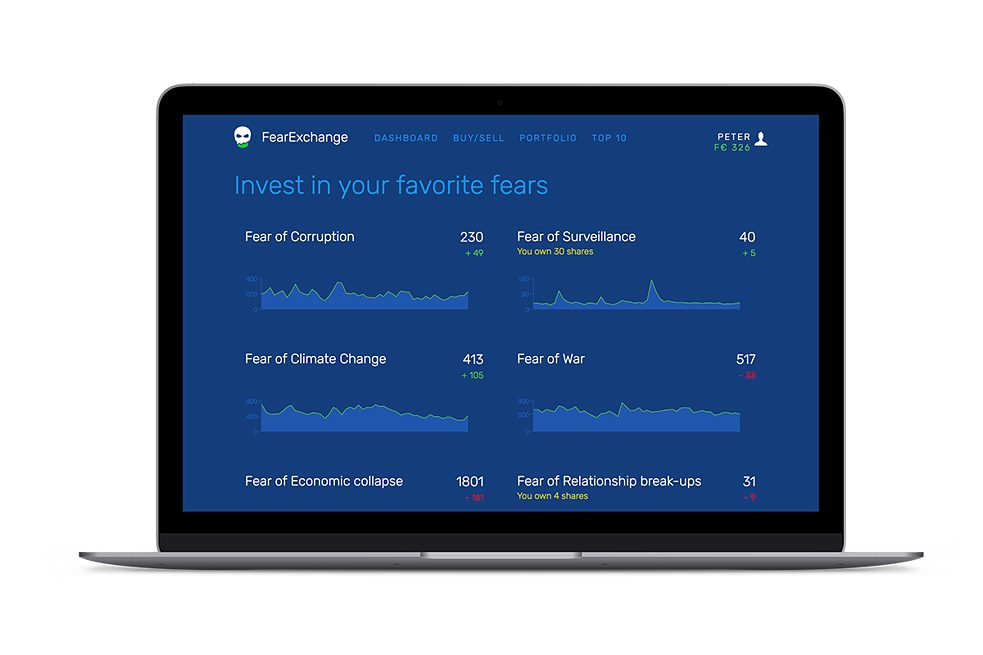They make algorithms dance and breathe life into software: Artists working with artificial intelligence are exploring and blurring the distinctions between man and machine. Fans of the sci-fi series Black Mirror will love these artists.
By Johannes Zeller
Do algorithms make better decisions than human beings? And can artificial intelligence (AI) actually be dumb? Questions like these are addressed by many artists in AI projects. A vibrant art scene based and rooted in German-speaking countries is scrutinising humanity in the age of machine learning and big data.
Sebastian Schmieg
Have you ever received a product recommendation from Amazon for a shoulder strap for a machine gun? The AI that
Sebastian Schmieg developed in his project
Other People Also Bought arrived at that point quite quickly: starting with the first product ever sold on Amazon – a book by Douglas Hofstadter – it filled a virtual shopping trolley by successively adding the first recommended item on Amazon's list "Customers who bought this item also bought..." Schmieg's work detects the absurd in algorithms and takes it to a logical conclusion. His
Segmentation.Network plays back more than 600,000 animated segments created by crowdworkers partitioning Flickr photos for a Microsoft image recognition dataset. Such datasets help an algorithm "learn" how the appearance of an object changes, depending on vantage point and camera angle, and thus eventually enable the algorithm to correctly identify a cow, for example, even in semi-profile. That is how much (human) work is needed to "feed" AI before it can make selective decisions without human input.
Florian Egermann
Florian Egermann from Cologne describes himself as an artist, activist and astronaut. And as the first, at least, he is very successful. Most recently, the founder of the
Failed Artists International network launched his own virtual currency, the F€URO, which can be used to invest in a range of fear stocks on a virtual
Fear Exchange.What will cause the next panic – corruption, surveillance, climate collapse? Players who think they know the answer can try their luck on the Fear Exchange and perhaps become a Top Fear Broker embracing the maxim: "Don't conquer fear. Gamble on it."
 What will cause the next panic? Participants in Florian Egermann’s stock exchange game can invest in a range of fears.
| Photo: © Florian Egermann, „FearExchange“, Web Art, 2017
Matthieu Cherubini
What will cause the next panic? Participants in Florian Egermann’s stock exchange game can invest in a range of fears.
| Photo: © Florian Egermann, „FearExchange“, Web Art, 2017
Matthieu Cherubini
Matthieu Cherubini is an artist from Switzerland living in Beijing. He started out as a software developer but today uses his coding skills mainly to turn ones and zeros into challenging sociopolitical art projects. His VR game
35,000 Feet simulates a flight over Syria. While drones buzz through the skies and the ruins of a war zone pass by below, the player-passenger has the distracting options of watching an inflight Hollywood movie or reading a glossy magazine. Anyone who notices the contrasts and feels like commenting on them can send a tweet straight from the plane. The concept ties in with
Afghan War Diary (2010), which projected virtual kills in the war game Counter-Strike onto combat zones in Afghanistan visualised through Google Earth.
Manu Luksch
Dreams Rewired (2015) – a compilation of utopias about modern communication technologies – shows beyond doubt that the wondrous effects of new technologies on society and daily life hold an irresistible fascination for Austrian artist
Manu Luksch. The overall message may seem technophobic but the filmcraft is decidedly technophile. Luksch's latest AI project – the
ALGO-RHYTHM series – is about decisions that perhaps ought to be taken by humans being "outsourced" to AI. The
Rap Musical against Automated Propaganda is the first of a series of works that challenge viewers to weigh their desire for convenience and efficiency against freedom of choice.
Egor Kraft
Based in Vienna, Moscow and Berlin, Egor Kraft is an interdisciplinary artist interested in human perception. For his project The New Color he created a fake website on which a non-existent company announces the development of a totally new colour. Visitors to the site failed to recognise the fake news for what it was and the project soon developed its own dynamic. Requests were received daily from people wanting to see the new colour. Their mails are published in a book documenting the project. In the kinetic structure
I Print, Therefore I Am, Kraft created a highly philosophical machine installation. With five litres of ink, he managed to get a modified printer to work non-stop for two months printing a machine version of the René Descartes quote over and over again on a paper loop.
!Mediengruppe Bitnik
!Mediengruppe Bitnik (which software developers read as the NOT Mediengruppe Bitnik) is a Zurich- and London-based duo that attracted attention in 2013 when they sent WikiLeaks founder Julian Assange a camera that broadcast its journey through the postal system live on the Internet. In a subsequent project, they created the
Random Darknet Shopper, an automated bot that placed random orders on illegal darknet markets and had the products sent directly to the gallery space. In 2015, their installation
H3333333K added a glitch – a distorting digital image error – to the facade of the House of Electronic Arts Basel.
Sascha Pohflepp
Synthetic biology, geo-engineering, the creation of new worlds –
Sascha Pohflepp's work deals with complex subjects. A designer, writer and AI artist, he examines the role of technology in the exploration of our environment, including outer space. Most of his work plays out in a realm somewhere between brainwaves and space waves. His
Spacewalk, for instance, shows what happens when two artificial intelligences play a game that involves batching and reconstructing nearly 3,000 images of predatory animals. The result is a generative neural network that can be viewed as a 120x120cm print. Pohflepp also writes essays on utopian topics that put him in the company of Emerson and Asimov – on
living machines, for example.

